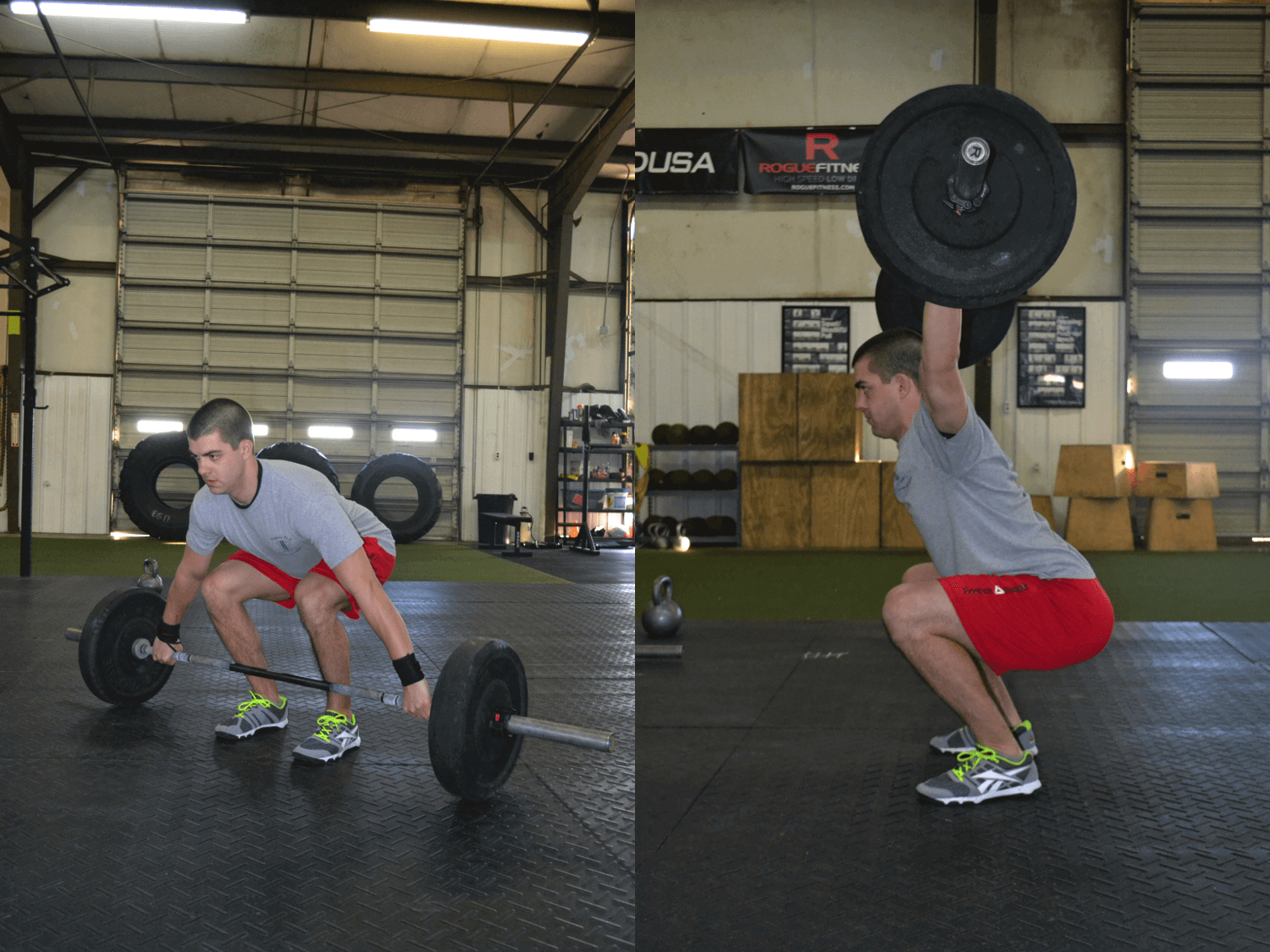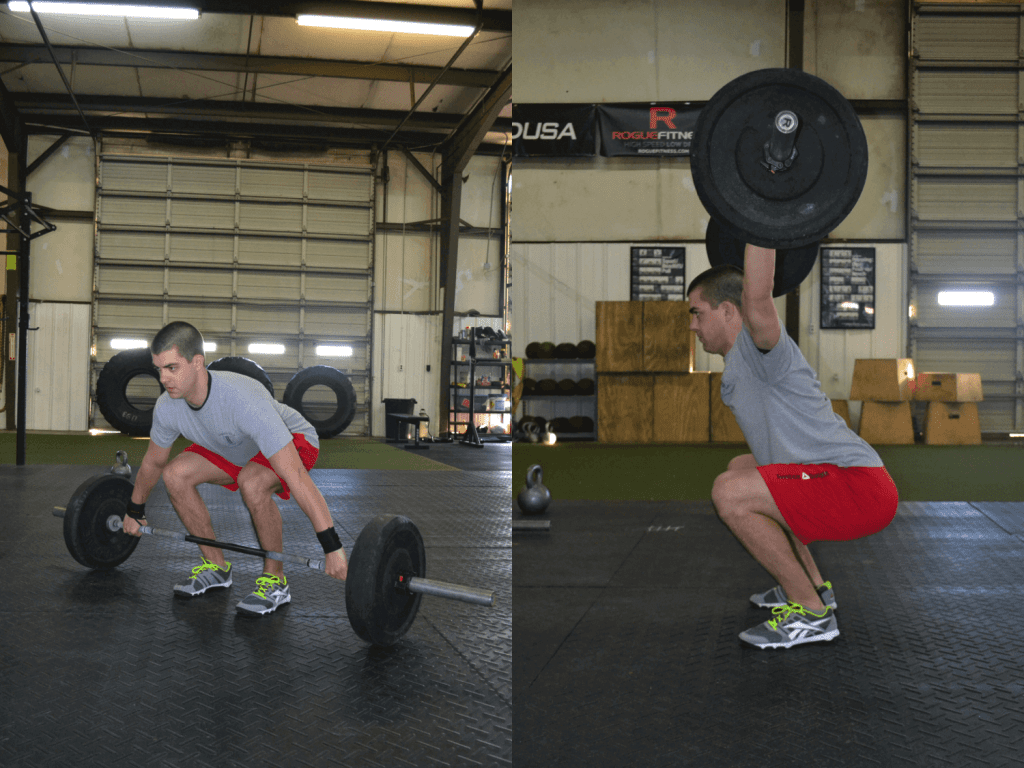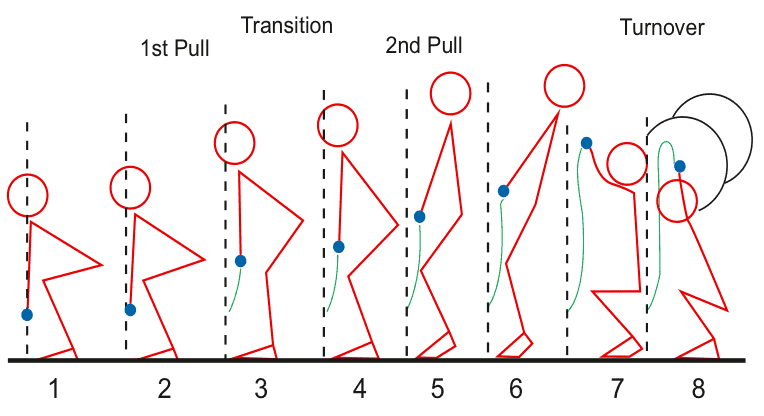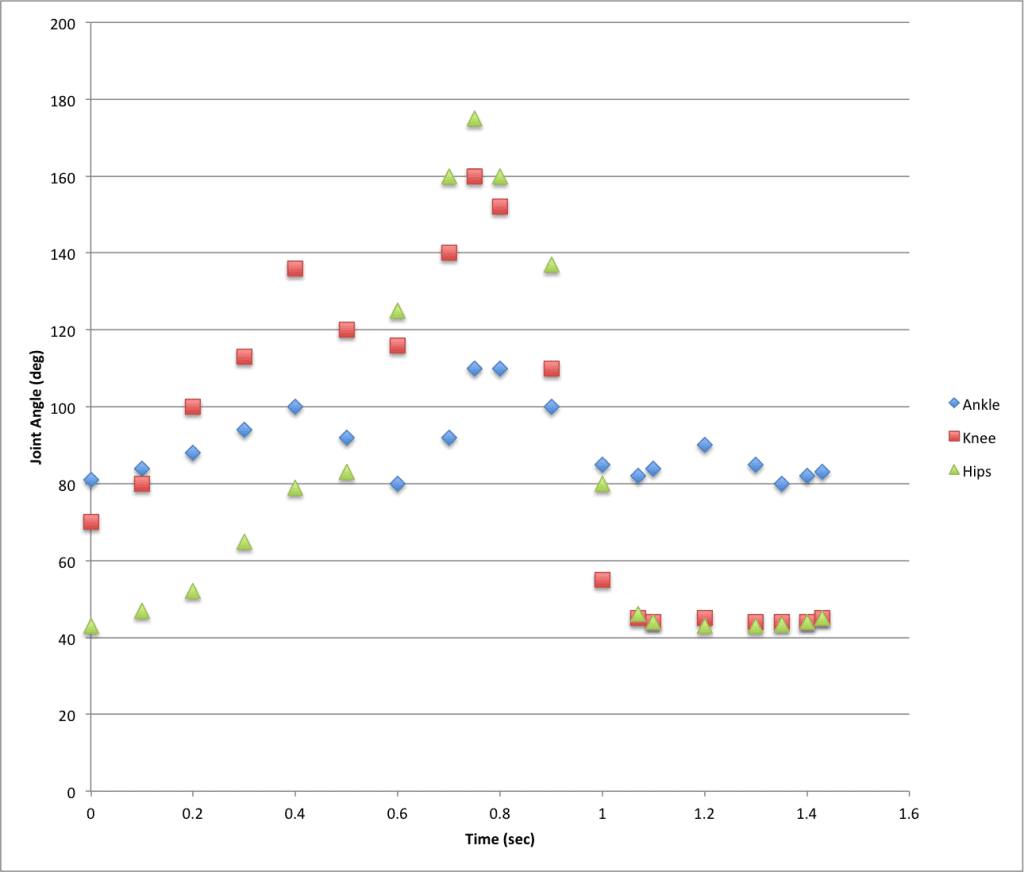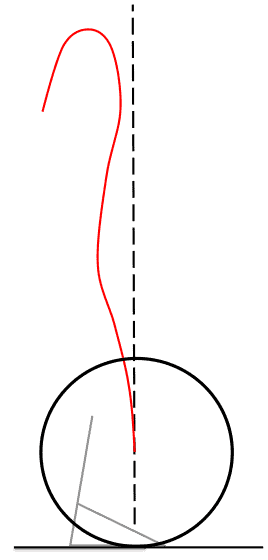Biomechanics of the Snatch
The snatch exercise is a frequently used movement in strength & conditioning programs, and for a good reason. This exercise allows the athlete to lift very explosively and with biomechanics similar to that seen in many other athletic movements such as running and jumping. However, the snatch lift is highly technical and requires time and a good coach to learn how to master.
The simplest explanation of the snatch exercise is that it is a movement in which the athlete lifts a barbell from the ground to an overhead position in one explosive and continuous movement.
To set up for the snatch, the lifter should approach the bar with a hip-width stance and toes turned 10-15˚ out. The hips should be higher than the knees, chest up and out, scapula retracted, and back straight. Finally, the shoulders should be directly over or slightly in front of the barbell and weight distributed over the center of the foot (Favre, 2006).
Following the setup, the snatch is typically divided into six phases based on knee angle displacement.
Snatch Exercise Phases
First, Pull (#1-3) begins as a barbell is lifted off the ground and ends when the knee reaches the first maximum extension (Gourgoulis, 2000). The knees and hips are extended during this phase while the ankles are plantar-flexed, but the entire foot remains in contact with the ground. The trunk should be held at a relatively constant angle about the ground (Barnoletz, 1996).
Transition, aka Knee Bend (#3-4), begins at first knee extension maximum and ends at maximum knee flexion (Gourgoulis, 2000). The knees are pushed anteriorly towards the barbell and flex about 20° during the phase while the hips continue to extend (Barnoletz, 1996).
Second Pull (#4-6) begins at maximum knee flexion and ends at the second maximum knee extension (Gourgoulis, 2000). During this phase, the ankles are plantar flexed, and heels raise off the ground (some debate about this in the Oly world) while the knees and hips continue to extend (Barnoletz, 1996).
Turnover (#6-7) phase is from the end of the second pull until the barbell reaches its maximum height (Gourgoulis, 2000). During this phase, the lifter begins to move their body downward and begins to reestablish full foot contact with the ground (Barnoletz, 1996).
Catch (#7-8) from maximum barbell height until the barbell is stabilized by the lifter overhead (Gourgoulis, 2000). Feet are in full contact with the floor, and the arms are locked overhead (Barnoletz, 1996).
Rising begins after the catch and ends by rising from a squat position (Barnoletz, 1996).
Joint Angular Displacements During the Snatch Lift
- Hips are extending from 1st pull through 2nd pull.
- Knee bend during the transition phase allows the body to use elastic energy and the stretch reflexes of the knee extensors to develop explosive muscular power.
- The hips, knees, and ankles all reach their maximum angular displacements within 40ms of each other during the 2nd pull. This is referred to as triple extension because all three joints of the lower extremity are at the maximum extension.
- Hip, knee, and ankle velocities are also the highest during the 2nd pull.
- A large amount of power is generated during the triple extension, and this is why the snatch is so popular with sports training because it is very similar to the movements seen in a variety of sports (Gourgoulis, 2000).
Barbell Trajectory During the Snatch Exercise
- The maximum barbell height should be about 70% of lifter’s height.
- Drop distance of elite Greek weightlifters was 11.3% of maximum barbell vertical height.
- Barbell pulled towards lifter during the first pull and transition (Gourgoulis, 2000).
Joint Moments and Power
- Plantar flexors had the largest joint moments and contributed to 10% of the barbell’s maximum velocity.
- Hips have the highest power demands.
- Shoulders contribute significantly to this movement, although the literature often overlooks their involvement (Bartonletz, 1996).
Work and Power
- The mechanical work done in the first pull is significantly higher than the second pull.
- The power of the second pull is significantly higher than the first pull (Gourgoulis, 2004).
Summary
- Max extension at the hip, knee, and ankle is achieved during the second pull. This is known as triple extension.
- Triple extension is seen in a variety of athletic movements such as jumping and running, which is one reason why the snatch is an excellent exercise for athletes to use in their weight lifting program.
- Hips had the highest power demands and joint angular velocities.
- Plantar flexors contributed to 10% of the barbell’s maximum velocity.
- The knee bend in the transition phase allowed the body to use the knee extensors’ stretch reflexes to develop muscular power.
References
- Bartonletz, K.E. (1996). Biomechanics of the snatch: towards a higher training efficiency. Strength and Conditioning Journal, 18(3), 24-31.
- Campos, J., Poletaev, P., Cuesta, A., Pablos, C., & Carratalà. (2006). Kinematical analysis of the snatch in elite male junior weightlifters of different weight categories. Journal of Strength and Conditioning Research, 20(4), 843-850.
- Favre, M.W. (2006). The First Pull. USA Weighlifting Magazine. 25(1), 2006.
- Garhammer, J. (1980). Power production by Olympic weightlifters. Medicine and Science in Sports and Exercise. 12(1), 54-60.
- Gourgoulis, V., Aggelousis, N., Mavromatis, G., & Garas, A. (2000). Three-dimensional kinematic analysis of the snatch of elite Greek Weightlifters. Journal of Sports Sciences, 18, 643-652.
- Gourgoulis, V., Aggeloussis, N., Kalivas, V., Antoniou, P., & Mavromatis, G. (2004). Snatch lift kinematics and bar energetics in male adolescent and adult weightlifters. Journal of Sports Medicine and Physical Fitness, 44(2), 126-131.
- Lauder, M.A. & Lake, J.P. (2008). Biomechanical comparison of unilateral and bilateral power snatch lifts. Journal of Strength and Conditioning Research, 22(3), 653-660.
- Lee, Y.H., Huwang, C.Y., & Tsuang, Y.h. (1995). Biomechanical characteristics of preactivation and pulling phases of snatch lift. Journal of Applied Biomechanics, 11, 288-289.
- Liu, Y.C. & Chen, W.C. (2001). Foot pressure study during the pulling phase of snatch lifting. Biomechanics Symposia, University of San Francisco.
- Okada, J., iijima, K., Fukunaga, T., Kikuchi, T., & Kiyotada, K. (2008). Kinematic analysis of the snatch technique used by Japanese and international female weightlifters at the 2006 Junior World Championship. International Journal of Sport and Health Science, 6, 194-202.

